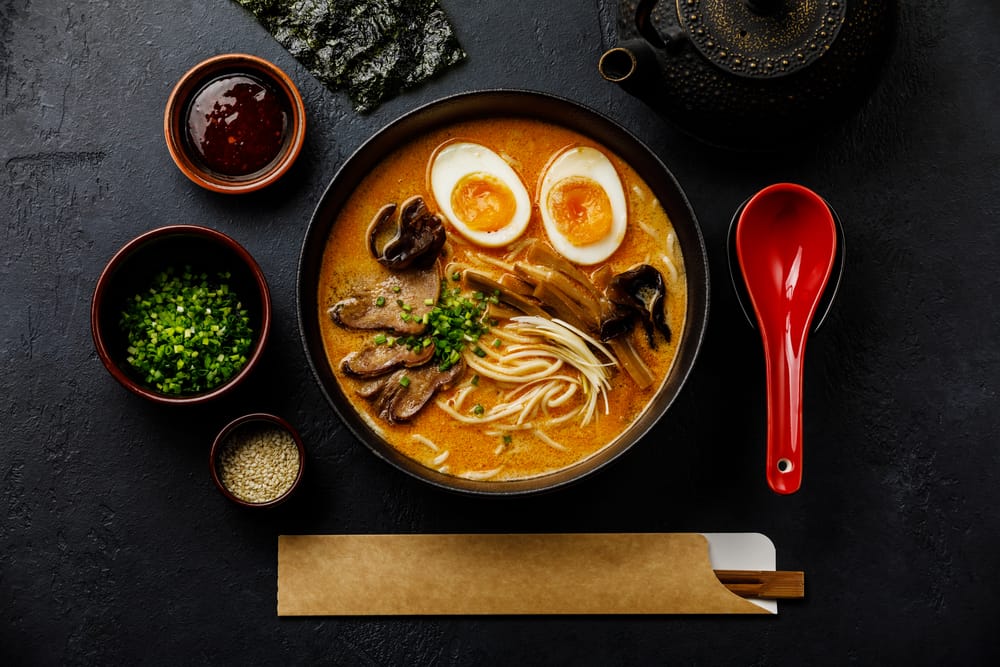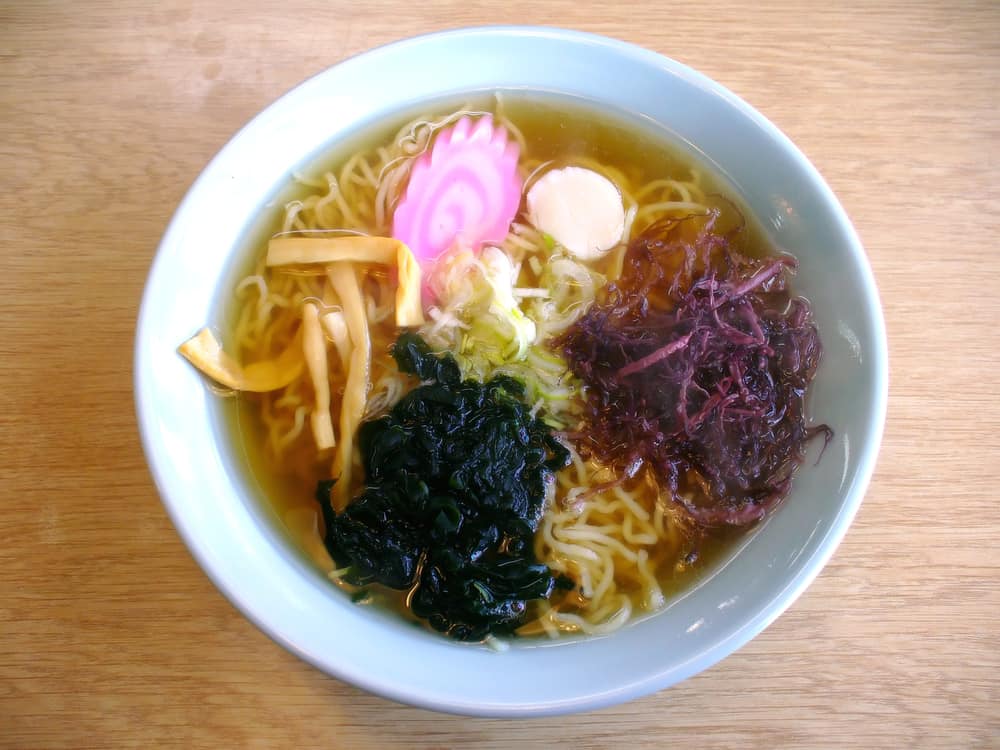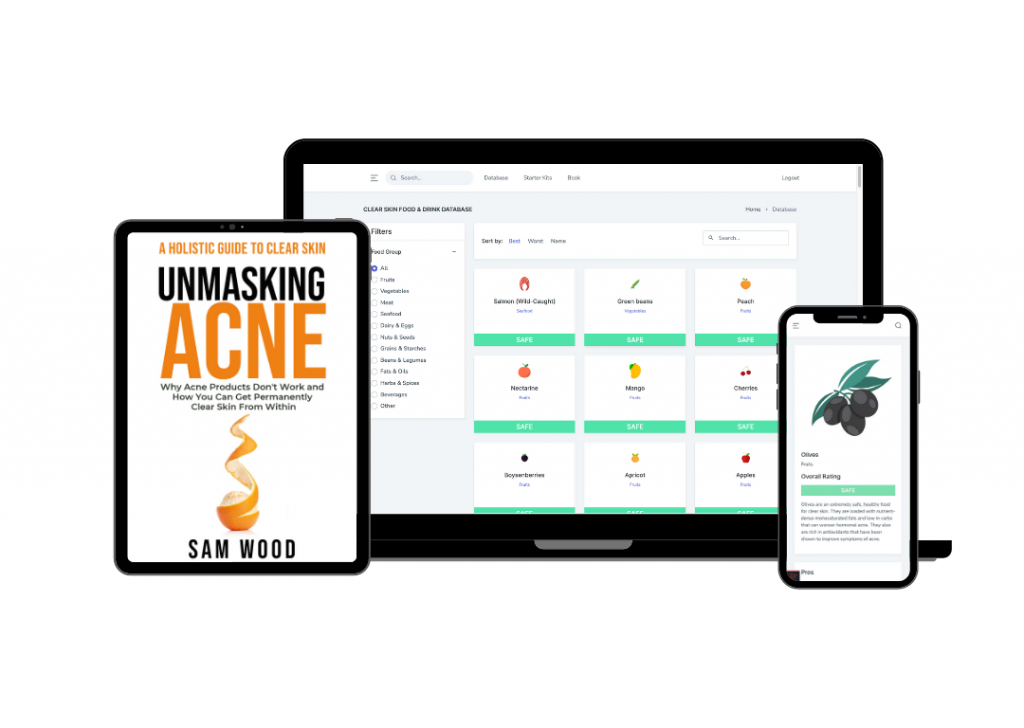Ramen is a Japanese soup made of Chinese wheat noodles in a meat broth with soy sauce, seaweeds, and other spices.
It’s available in both traditional restaurants as well as in instant forms, enjoyed by millions globally. However, everything we eat has some health benefits and drawbacks.
Ingredients such as seaweed, soy sauce, chicken, salt, and spices have been shown to be harmful to the health of your skin, which are often present in ramen.
Ramen is also commonly very rich in sodium, which can have an adverse effect on skin health. Moreover, ramen is poorly digested, resulting in poor gut well-being.
This tasty soup is also usually packed with gluten, which can directly cause acne if you are gluten intolerant. Let’s dive a little deeper into why ramen can cause acne.
5 Reasons Why Ramen Causes Acne
1: Seaweed

Seaweed is a familiar component in Japanese cuisine, and it can be found in dishes such as sushi and ramen.
Seaweed carries a lot of iodine, which can cause skin breakouts.
Iodine is an essential mineral, and the body requires a certain amount of iodine to function properly. However, excess amounts of iodine can be harmful to your skin.
Iodine is recommended at 150mcg per day for healthy adults and 200mcg per day for pregnant women. More than that, and your hair follicles will excrete it, clogging your skin pores.
Acne production is triggered by clogged pores. As a result, you need to monitor the amount of seaweed you add to the ramen and not exceed the recommended dosage.
2: Spices
Do you like your ramen without or with spices? If you prefer it with spices, I’m afraid I have some bad news for you.
The spices in your ramen may cause acne on your face at times, as it can stimulate sebum production from hair pores.
This keeps your skin oily and increases the likelihood of dirt particles clinging to it. Spices, on the other hand, can upset your stomach.
How can you expect your skin to be in good condition if your digestive system isn’t in good shape?
If you consume spices on a regular basis, they become a part of your skin’s food via blood circulation. This will result in an increase in facial acne.
3: Soy Sauce
If you like Chinese food, it can be hard to stop adding soy sauce to it. However, this delectable sauce comes with several adverse effects on your body and skin.
Soy sauce can cause hormonal acne by altering the androgen level in your body.
Hormonal acne is caused by an increase or decrease in the body’s required hormone levels.
Skin irritation occurs when androgen levels are elevated as a result of soy in your ramen. Acne will develop if androgen levels remain elevated for an extended period of time.
And if you already have acne, it will aggravate it. It’s best to avoid, no matter how tasty it is, for hormonal balance.
4: Meat
The majority of ramen is made with meat broth. Many Ramen fans like to add chicken, beef, or pork to their bowls.
You can eat skinless chicken once in a while, but excessive consumption is not recommended in the long run.
The chicken, as well as the skin, contains a high concentration of omega-6 fatty acids. These fatty acids increase inflammation in your body, which is one of the causes of acne.
Moreover, beef contains an amino acid known as “Leucine.” Leucine stimulates a chain reaction that in turn makes the oil glands secrete more oil.
You’ll also be more prone to oily skin and breakouts. Acne will arise as a consequence of this.
5: High Sodium Levels
Ramen’s high sodium content may be one of the causes of acne. If you like your Ramen a little too salty, you’re setting yourself up for skin breakouts.
Like other organs and parts of our body, our skin requires a constant supply of nourishment to stay healthy.
When you consume too much sodium, it dehydrates your skin. Dry skin is more prone to acne and traps bacteria and dirt in the pores.
Furthermore, when the skin is dry, the sebaceous gland becomes active and produces oil. Acne formation is aided by dead skin and oil, as well as bacteria.
3 Ramen Tips To Lessen Acne Likelihood
1: Try Non-Spicy Ramen

The first life hack is to choose non-spicy ramen. While you may enjoy spicy ramen at times, your skin will suffer as a result later.
It’s much better to eat a healthy diet and limit your spice intake. This includes low sodium/salt levels in the food.
Only use the most necessary (main) ingredients to prepare delicious and healthy food for yourself. If you’re a spice lover, it takes time to transition from spicy to non-spicy foods.
Our taste buds adjust more slowly than we realize. However, once you’ve made your decision, you’ll start enjoying the alternative. Remember not to add hot sauce to your ramen.
Hot sauce can also cause acne due to the capsaicin found within it, which can cause inflammation.
2: Replace Ramen Spices with Vegetables
Veggies are always a healthy food option. They are high in nutrients, which improve your overall health and give you a radiant complexion.
To transform a non-healthy food choice into a healthy one, consider adding veggies like baby spinach, lettuce, cabbage, and bean sprouts.
All of these vegetables contain antioxidants, which help in the fight against harmful substances in our bodies. They also boost our skin’s immune system.
A healthy body leads to healthy skin. If your body’s overall health is strong, you will notice an improvement in your skin and, as a result, a lower chance of developing acne.
What’s more, if you already have acne, eating vegetables can help you get rid of it. Because of this, make Ramen with less spice, salt, and more vegetables!
3: Give Eggless Ramen a Try
Another reason for acne after eating ramen is the presence of eggs. Eggs play a major role in raising body temperature and increasing sweating on the skin.
More sweating means more moisture and breakouts. If you’re concerned about triggering or developing acne, eggless noodles are a much better option.
Although eggs do have some health benefits, adding an egg to your food may cause more skin breakouts because diet significantly influences how our skin looks.
Reducing our intake of fats and oil-producing foods can significantly improve our skin. Once in a while, you can add an egg to your ramen. Just don’t make it a daily habit.
Takeaway
Everyone loves ramen; it’s a popular meal/snack around the world. We may cook it differently depending on our preferences, but it’s generally agreed that it’s tasty and easy to prepare.
But is it healthy, or does it harm our skin? I can’t comment on its nutritional value, but it can play an indirect role in acne formation.
Acne can be triggered by seaweed, soy sauce, meat, egg, spices, salt, and other ingredients used to flavor ramen. Our first suggestion is to try to limit your ramen consumption.
Make it a one-time meal only. If you’re a diehard ramen fan, opt for fewer spices, no eggs, and more vegetable options.

